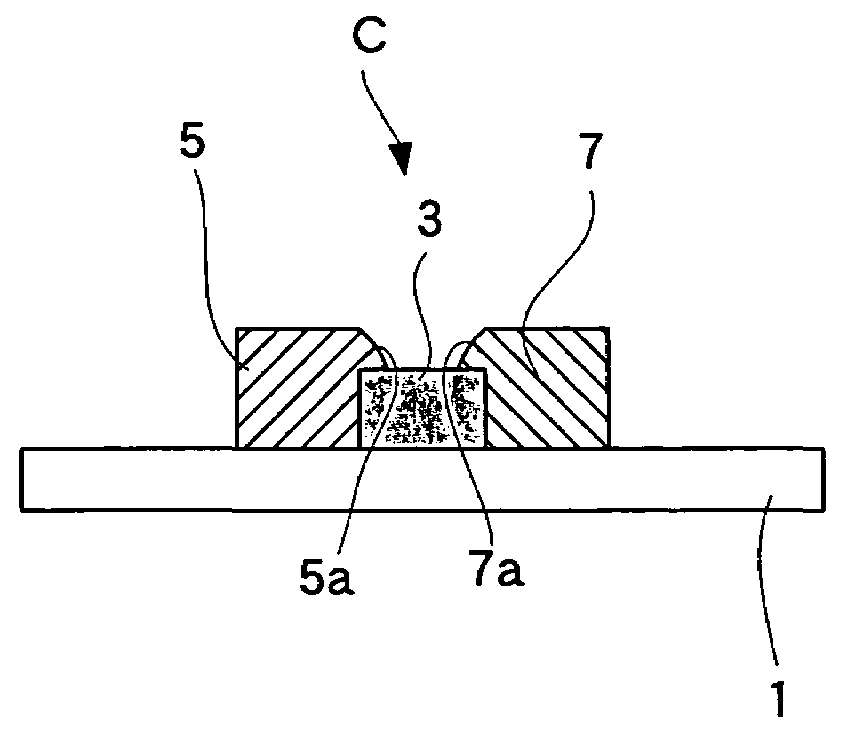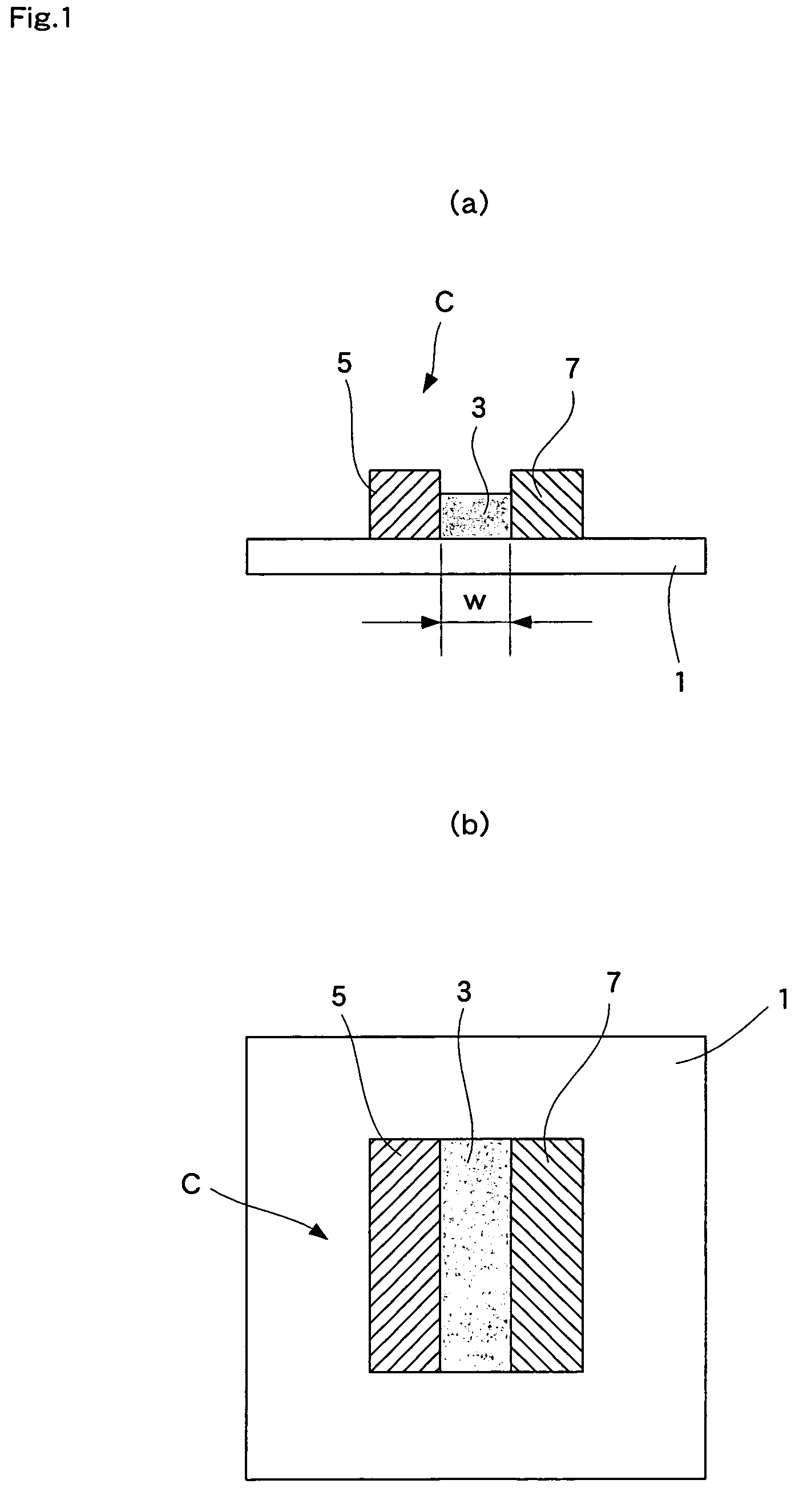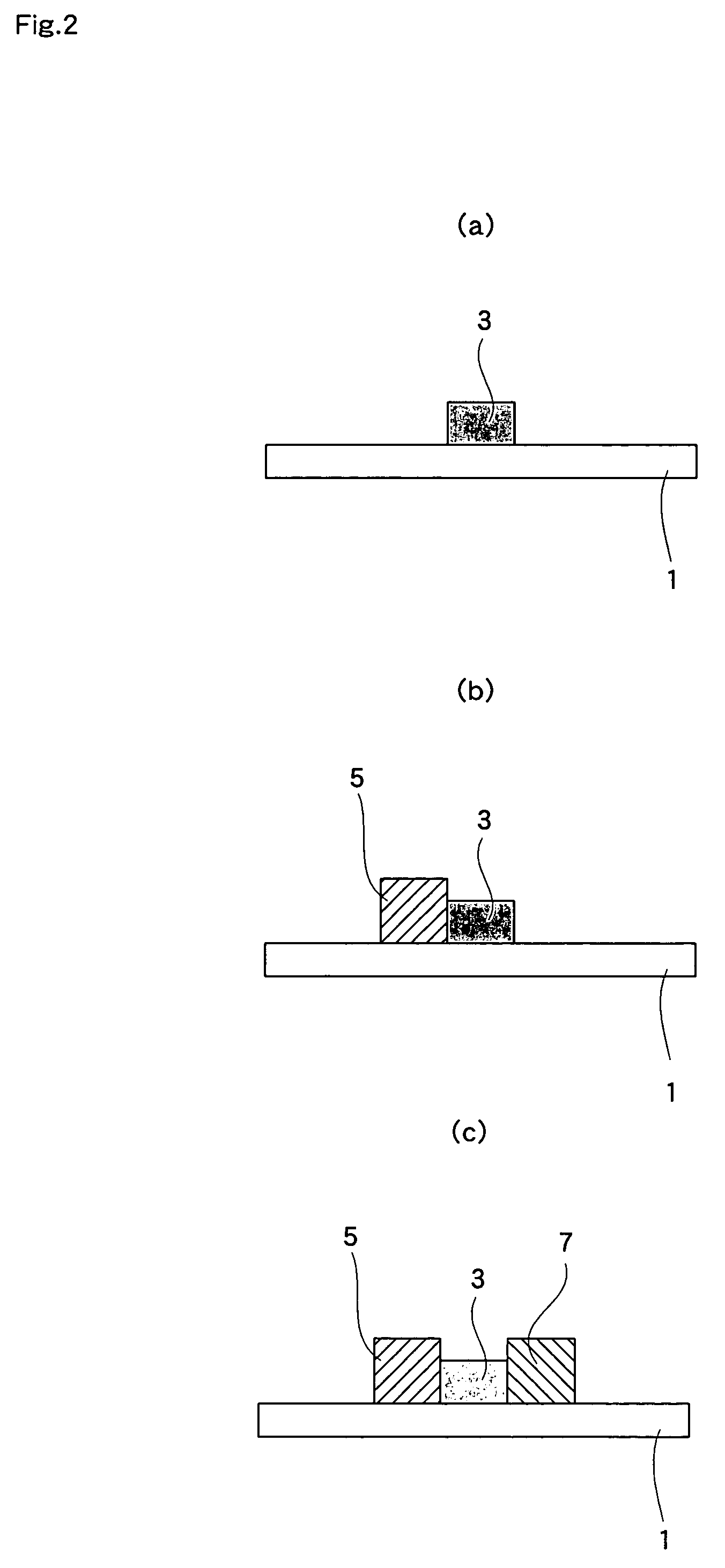Solid oxide fuel cell
- Summary
- Abstract
- Description
- Claims
- Application Information
AI Technical Summary
Benefits of technology
Problems solved by technology
Method used
Image
Examples
second embodiment
[0056]Hereunder, the second embodiment, wherein the fuel cell of the present invention is employed for a solid oxide fuel cell, is explained with reference to the drawings. FIG. 5 shows a fuel cell of the second embodiment of the present invention, wherein (a) is a sectional view and (b) is a plan view thereof.
[0057]As shown in FIG. 5, in this fuel cell, a plurality of strip-like electrolytes 3 are disposed on one surface of a substrate 1 spaced substantially equally apart. A strip-like fuel electrode 5 and an air electrode 7 are adjacently disposed so as to sandwich an electrolyte 3 between them. Each single cell C is composed of an electrolyte 3, a fuel electrode 5, and an air electrode 7. A strip-like interconnector 9 is adjacently disposed between each single cell C, i.e., between a fuel electrode 5 and an air electrode 7. Single cells C are serially connected to each other through these interconnectors 9. A strip-like current collector unit 11 is disposed adjacent to the single...
third embodiment
[0061]The third embodiment, wherein the fuel cell of the present invention is employed for a solid oxide fuel cell, is explained below with reference to drawings. FIG. 6 is a partial sectional view of a fuel cell according to the present embodiment.
[0062]As shown in FIG. 6, this fuel cell comprises a single cell C having an electrolyte 3, a fuel electrode 5, and an air electrode 7, wherein the single cell C is supported by a substrate 1.
[0063]In the single cell C, the electrolyte 3 is rectangularly formed on top of the substrate 1 (one surface), and the air electrode 7 having essentially the same shape as the electrolyte 3 is formed thereon. The fuel electrode 5 is formed on the substrate 1 adjacent to the electrolyte 3. The fuel electrode 5 is in contact with the side face of the electrolyte 3 and the thickness thereof is less than the electrolyte 3. In other words, the top surface of the fuel electrode 5 is lower than that of the electrolyte 3. Therefore, the fuel electrode 5 and ...
example 1
[0082]Hereunder, the present invention is explained in detail with reference to Examples. In Example 1, the way the fuel cell shown in FIG. 5 was manufactured is explained.
[0083]SDC[(Ce, Sm)O3] powder (particle size; 0.01-10 μm, average particle size; 0.1 μm) was used as the material for the electrolyte 3 and mixed with cellulose-based varnish to obtain an electrolyte paste. The viscosity of the electrolyte paste was set at 5×105 mPa·s, which is suitable for screen printing. Furthermore, as the material for the fuel electrode 5, a mixture of NiO powder (particle size: 0.01-10 μm, average particle size: 1 μm) and SDC [(Ce, Sm)O3] powder (particle size: 0.01-10 μm, average particle size: 0.1 μm) in a weight ratio of 7:3 was prepared, and the material was then mixed with cellulose-based varnish, giving a fuel electrode paste. The viscosity of the fuel electrode paste was set at 5×105 mPa·s, suitable for screen printing. SSC[(Sm, Sr)CoO3] powder (particle size: 0.1-10 μm, average partic...
PUM
 Login to View More
Login to View More Abstract
Description
Claims
Application Information
 Login to View More
Login to View More - R&D
- Intellectual Property
- Life Sciences
- Materials
- Tech Scout
- Unparalleled Data Quality
- Higher Quality Content
- 60% Fewer Hallucinations
Browse by: Latest US Patents, China's latest patents, Technical Efficacy Thesaurus, Application Domain, Technology Topic, Popular Technical Reports.
© 2025 PatSnap. All rights reserved.Legal|Privacy policy|Modern Slavery Act Transparency Statement|Sitemap|About US| Contact US: help@patsnap.com



